Barrett Firearms MRAD .308 Win/7.62 Bolt Action Rifle, Tungsten Gray Cerakote – 14370 For Sale
$5,970.98
The Barrett Firearms MRAD .308 Win/7.62 Bolt Action Rifle in Tungsten Gray Cerakote showcases exceptional precision engineering and versatility, suitable for both shooting ranges and field operations. Constructed with a robust monolithic upper receiver from durable 7000-series aluminum, it includes a full-length M1913 Picatinny top rail with an integrated taper for improved long-range accuracy. Its standout feature is the user-changeable barrel system, allowing for quick caliber conversions without a gunsmith, complemented by an adaptable handguard for mounting multiple accessories. The rifle features a folding stock that locks securely when extended and offers tool-free adjustments for custom fit, catering to both right and left-handed users with ambidextrous controls. Key highlights include a 20 MOA optics rail, lightweight folding stock, high-efficiency muzzle brake, and match-grade barrels, along with a polymer bolt guide, 10-round polymer magazine, and adjustable match-grade trigger. The MRAD is designed for seamless performance across various scenarios, making it a pinnacle of firearm innovation and reliability.
How far can a Barrett-Mrad shoot?
The Barrett MRAD (Multi-Role Adaptive Design) sniper rifle is designed for long-range shooting. It can effectively engage targets at distances of up to 1,500 to 2,000 meters (approximately 1 to 1.25 miles), depending on the ammunition and environmental conditions.
Is the MRAD a good rifle?
The Barrett MRAD (Multi-Role Adaptive Design) is generally considered a highly effective and versatile rifle. It is praised for its adaptability, precision, and modular design, allowing users to easily change calibers and customize components. The rifle has been adopted by various military and law enforcement agencies, which attests to its reliability and performance. Whether it is a good rifle depends on your specific needs, such as the intended use, budget, and preference for certain features. Overall, the MRAD is regarded as a quality rifle for long-range shooting.
What is the range of the Barrett Mrad sniper rifle?
The Barrett MRAD (Multi-Role Adaptive Design) sniper rifle typically has an effective range of up to approximately 1,500 to 2,000 meters, depending on the caliber used and other environmental factors.
Is it legal to own a 50 cal sniper rifle?
The legality of owning a .50 caliber sniper rifle varies by country and, within the United States, can vary by state and local laws. In some countries, such firearms are heavily regulated or banned for civilian ownership. In the U.S., federal law generally allows the ownership of .50 caliber rifles, but some states have specific restrictions or bans. For example, California has laws that restrict certain .50 caliber firearms. It’s important to check the specific firearms laws in your state or country to determine the legality of owning such a rifle. If you are considering purchasing one, it may also be wise to consult with a legal expert or firearms attorney to ensure compliance with all applicable laws.
Are Barrett rifles worth the money?
The value of Barrett rifles depends on what you are looking for in a firearm. Barrett rifles are known for their high quality, accuracy, and ability to deliver long-range precision. They are often used by military and law enforcement agencies around the world, which speaks to their reliability and performance. However, they are also quite expensive and may not be necessary for all users, especially if you’re looking for a rifle for more casual or recreational use.
If you need a high-performance rifle for long-range shooting and have the budget, many would argue that Barrett rifles are worth the investment. On the other hand, if your needs are less demanding, you might find more affordable alternatives that suit you just as well.
What sniper did Chris Kyle use?
Chris Kyle, the renowned American sniper, primarily used the McMillan TAC-338A and the Mk 12 Special Purpose Rifle during his service.
How much is 1 MRAD at 100 yards?
At 100 yards, 1 milliradian (MRAD) corresponds to approximately 3.6 inches. This is because 1 MRAD equals 1/1000th of the distance to the target, and converting from yards to inches (1 yard equals 36 inches), you get:
[ 1 text{ MRAD} = frac{100 text{ yards}}{1000} times 36 text{ inches/yard} = 3.6 text{ inches} ]So, 1 MRAD at 100 yards is 3.6 inches.
What is the most accurate military sniper rifle?
Determining the “most accurate” military sniper rifle can vary based on criteria such as range, environment, user preference, and specific mission requirements. However, some of the sniper rifles commonly regarded for their accuracy and performance include:
1. **CheyTac M200 Intervention** – Known for its long-range capability and accuracy, it is often highlighted for its performance at distances beyond 2,000 yards.
2. **Accuracy International AWM (Arctic Warfare Magnum)** – This rifle is used by militaries around the world and is known for its precision and reliability, particularly in challenging environments.
3. **Barrett MRAD (Multi-Role Adaptive Design)** – Known for its modular design and accuracy at long ranges, allowing for caliber change in the field.
4. **McMillan TAC-50** – This is one of the longest-range sniper rifles and has been used in record-breaking long-distance shots.
5. **Remington MSR (Modular Sniper Rifle)** – Offers high accuracy and modularity, designed for adaptability in various mission types.
It’s important to note that military units might choose sniper rifles based on specific operational needs, and there is no single rifle that stands out universally as the most accurate under all circumstances.
What is the most accurate rifle in the world?
The title of the “most accurate rifle in the world” can be subjective and depends on the criteria used for measurement, such as precision, consistency, or suitability for specific conditions. However, some of the rifles that are frequently mentioned for their exceptional accuracy include:
1. **Accuracy International AXSR** – Known for its precision and modularity, often used in competitive shooting.
2. **Sako TRG 22/42** – Popular among military and law enforcement for its accuracy over long distances.
3. **Surgeon Rifles Scalpel** – Custom-built rifles designed for extreme precision.
4. **Barrett MRAD** – A modular rifle system praised for its accuracy and versatility.
5. **Desert Tech SRS-A2** – Known for its compact design and long-range accuracy.
Rifle performance can vary based on specific configurations, ammunition, and the skill of the shooter.
What round do military snipers use?
Military snipers commonly use the 7.62×51mm NATO round and the .300 Winchester Magnum round for medium to long-range engagements. For extreme long-range targets, they might use the .338 Lapua Magnum or the .50 BMG (Browning Machine Gun) round. The choice of round depends on the mission requirements, target range, and specific sniper rifle being used.
Who uses Barrett Mrad?
The Barrett MRAD (Multi-Role Adaptive Design) is primarily used by military and law enforcement agencies worldwide. It is favored by special forces, snipers, and marksmen for precision shooting, adaptability, and its capability to be easily reconfigured for different calibers in the field.
Can civilians own military grade weapons?
Civilian ownership of military-grade weapons is heavily regulated and restricted in most countries. In the United States, for example, civilians are generally prohibited from owning fully automatic firearms, which are considered military-grade weapons, without obtaining a special license. These licenses are difficult to obtain and subject to strict regulations under the National Firearms Act. Other countries have even stricter regulations, often banning civilian ownership of such weapons entirely. It’s important to review the specific laws and regulations in the relevant jurisdiction to determine what’s permissible.
Who can buy a ghost gun?
Ghost guns are firearms that are assembled from kits or 3D-printed components and lack a serial number, making them difficult to trace. Laws regarding the possession, purchase, and assembly of ghost guns can vary significantly by country and within regions of the United States.
Generally, in locations where it is legal to purchase ghost gun kits or components, they are often accessible to individuals who are legally eligible to own firearms. However, recent regulatory changes in places like the United States have aimed to close loopholes, requiring serialization and background checks similar to those for traditionally manufactured firearms.
It’s important to check the specific laws and regulations in your jurisdiction as these are subject to change and can vary widely.
Can a civilian own a TAC 50?
Yes, a civilian can own a TAC-50 rifle in the United States, provided they comply with federal, state, and local laws regarding firearm ownership. The TAC-50 is considered a long-range, bolt-action rifle, and as such, it is not classified under federal law as a restricted firearm like fully automatic weapons. However, individuals must pass background checks and meet any additional state and local requirements for purchasing and owning firearms. Laws can vary significantly across different jurisdictions, so it’s important for prospective owners to be familiar with regulations specific to their area.
| Product Line | MRAD |
|---|---|
| Action | Bolt |
| Magazine Type | Polymer Relief Cut Drop Free |
| Stock | Adjustable Folding Right Side |
| Trigger Type | Fully Adjustable |
| Muzzle Type | Muzzle Brake |
| Twist | 1 |
| Hand Orientation | Right |
| Safety | Thumb Operated, Ambidextrous |
| Receiver Material | Aluminum |
| Stock Material | Synthetic |
| Receiver Finish | Tungsten Gray Cerakote |
| Stock Finish | Tungsten Gray Cerakote |
| Overall Length | 45.4" |
| Barrel Type | Fluted |
Be the first to review “Barrett Firearms MRAD .308 Win/7.62 Bolt Action Rifle, Tungsten Gray Cerakote – 14370” Cancel reply
Related products
Barrett Firearms MRAD
Barrett Firearms MRAD .338 Lapua Mag Bolt Action Rifle, Black Cerakote – 14355
Barrett Firearms MRAD
Barrett Firearms MRAD .338 Lapua Mag Bolt Action Rifle, Tungsten Gray Cerakote – 14388
Barrett Firearms MRAD
Barrett Firearms MRAD 6.5 Crd Bolt Action Rifle, Tungsten Gray Cerakote – 14449
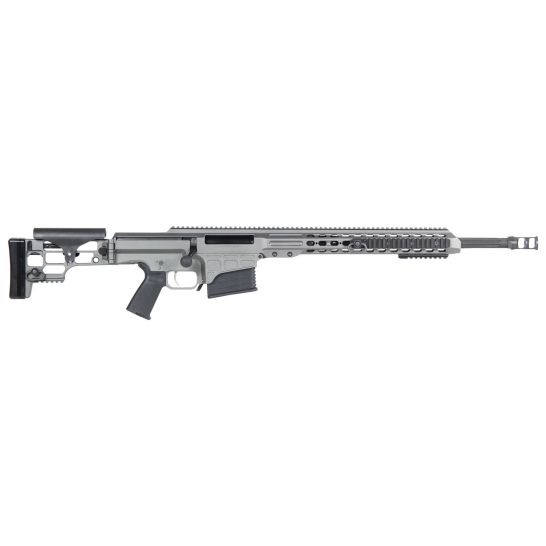
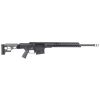
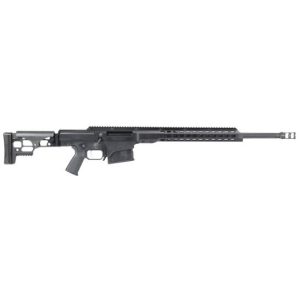
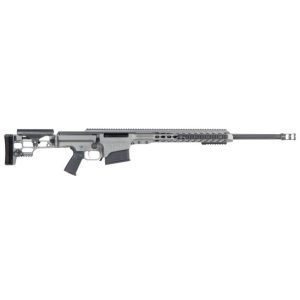
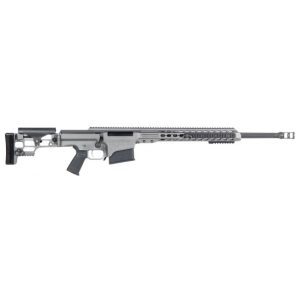
Reviews
There are no reviews yet.